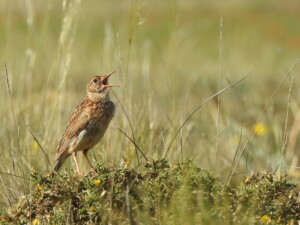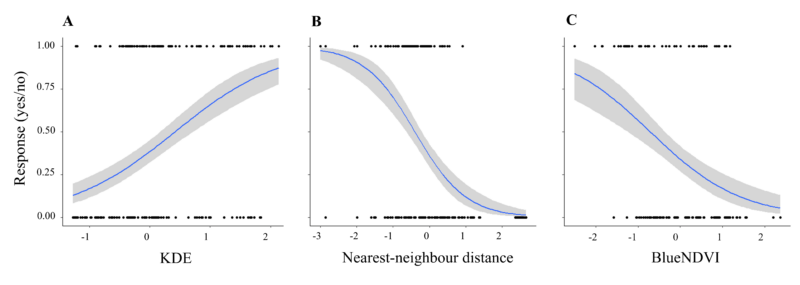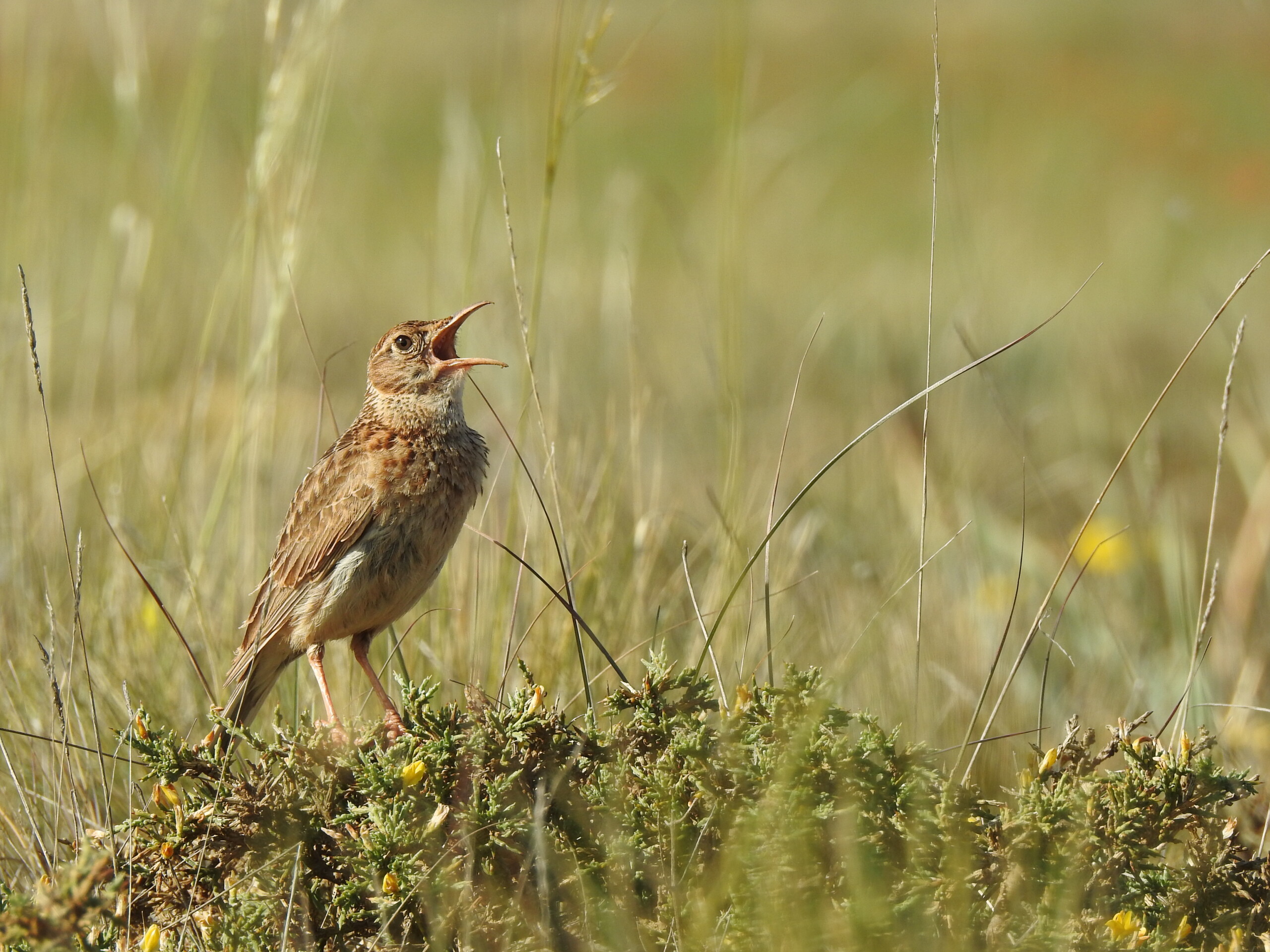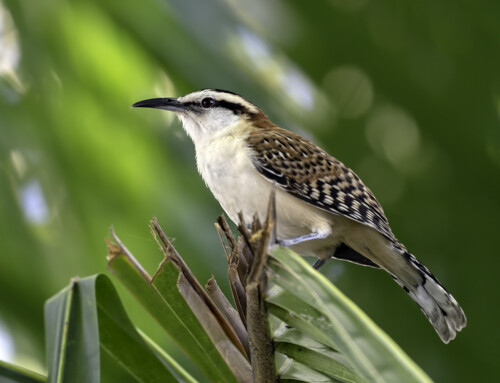
LINKED PAPER
Conspecific density and habitat quality drive the defence and vocal behaviour of a territorial passerine. Barrero, A., Gómez‐Catasús, J., Pérez‐Granados, C., Bustillo‐de la Rosa, D., Traba, J. 2023. IBIS. DOI:10.1111/ibi.13295 VIEW
Territorial defence is described in a wide variety of taxa and occurs when an individual continuously defends an area against the presence or intrusion of conspecifics or heterospecifics. The “active territorial defence” hypothesis predicts that territorial individuals defend a fixed area to gain preferential access to resources such as food, mates and optimal breeding sites. Variation in the intensity of territorial defence and the sex targeted for exclusion may indicate the resource being competed for (i.e. food or mates), with this territorial defensive behaviour being expressed by one or more aggressive or visual displays and acoustic signals. Thus, territorial behaviour, along with other sexually driven traits such as body size, plumage colouring or body condition, may accurately reflect the relative quality of individuals, their hierarchical position and the quality of the territory they occupy. However, our current knowledge about birds’ territorial behaviour is limited to certain species.
Among those species for which its territorial behavior has never been studied before is the Dupont’s Lark Chersophilus duponti, a threatened steppe passerine. Shy, elusive, and very difficult to detect visually, it breeds from late February to late June (Barrero et al. 2023) and has been described as socially monogamous, although extra-pair copulations may occur. This species is distributed in territorial aggregations even on a small scale, where males maintain a territory throughout the year, increasing the intensity of territorial behaviour during the breeding season, favoured by a male-biased sex ratio (0.79). Their vocal activity consists mainly of territorial calls, songs and alarm calls emitted by males only.
In this study, we assessed whether the probability of Dupont’s Larks responding to a playback was associated to conspecific density and habitat quality. Furthermore, we assessed whether the intensity of male territorial response (i.e. vocal activity rate, type of vocalization employed) varied with habitat quality, conspecific density and close intrasexual competition, as well as with males’ body condition.
For this purpose, we conducted a single experiment simulating the intrusion of a foreign male in various locations with different population densities using a sound playback. In these locations, we measured habitat quality (assessed through vegetation indices positively correlated with food availability, Traba et al. 2022), intrasexual competition, and individuals’ physical condition. Additionally, we measured various movement and presence parameters (response probability, latency time, and minimum distance to the playback) and different singing performance parameters (vocal activity rate, singing rate, calling rate, alarm rate, and crowing rate) that could serve as honest signals of individual quality due to their direct energy cost.

Figure 1. Effect of ‘Kernel Density Estimator’ (KDE (a)), ‘Nearest-neighbour distance’ (b) and ‘BlueNDVI’ (c) on the response probability of Dupont’s Lark males in the study area. Variables on the x-axis are log-transformed. Mean (blue lines) and 95% BCI (grey surfaces) are depicted.
Dupont’s Lark males exhibited higher responsiveness in areas with a high density of males, both at the landscape (KDE: Fig. 1a) and at the local scale (nearest neighbor distance: Fig. 1b). In addition, males situated in lower-quality areas (i.e., lower BNDVI values), which aligned with higher individual density, exhibited greater responsiveness than males located in higher-quality territories but with lower densities at the landscape scale (Fig. 1c).
Secondly, when testing the intensity of Dupont’s Lark males’ response to a potential intruder, we observed different scenarios: 1) Dupont’s Lark males took longer to respond in areas with lower individual density (Fig. 2a), particularly as the breeding season progressed; 2) Males in higher-quality areas (i.e., higher BNDVI values) defended their territory by exhibiting a higher vocal activity rate (Fig. 2b) and a higher singing rate (Fig. 2c); 3) The singing rate was also higher in areas with lower male density at the landscape scale (Fig. 2d), but where distances to the nearest neighbors were shorter (Fig. 2e); 4) Males in lower-quality areas predominantly responded with alarms (Fig. 2f), especially in those areas with higher male density at the landscape scale, particularly at the beginning of the study period, but also with crowing (Fig. 2g); and 5) Surprisingly, the body condition of the males was not an important predictor of any of the behavioral variables.

Figure 2. Effect of ‘Kernel Density Estimator’ (KDE; a, d), ‘BlueNDVI’ (b, c, f, g) and ‘Nearest-neighbour distance’ (e) on the acoustic response variables of Dupont’s Lark males in the study area. Variables are log-transformed and standardized. Mean (blue lines) and 95% BCI (grey surfaces) are depicted.
In summary, our findings suggest that males living in territories with better quality of habitat also inhabit areas with lower conspecific density and defend their territory with greater intensity, emitting more complex songs and exhibiting a higher vocal activity rate. Conversely, males situated in lower-quality areas behave as floaters, responding quickly but cautiously to the simulated intrusion of a foreign male by emitting alarms and clucking, without displaying an intensive territorial defense. Despite its difficulty, future studies should try to incorporate information on the reproductive status of individuals to examine whether the intensity of territorial defense and physical condition are related to the reproductive status of the monitored birds.
References
Barrero, A., Gómez‐Catasús, J., Pérez‐Granados, C., Bustillo‐de la Rosa, D., Traba, J. 2023. Nest Features and Nesting Niche Segregation in Five Iberian Steppe Passerines. Ardeola 70:2. VIEW
Traba, J., Gómez‐Catasús, J., Barrero, A., Bustillo‐de la Rosa, D., Zurdo, J., Hervás, I., Pérez-Granados, C., García de la Morena, E.L., Santamaría, A., Reverter, M. 2022. Comparative assessment of satellite‐and drone‐based vegetation indices to predict arthropod biomass in shrub‐steppes. Ecological Applications 32:8. VIEW
Image credits
Top right: Male Dupont’s Lark singing © Adrián Barrero.
Blog posts express the views of the individual author(s) and not those of the BOU.
If you want to write about your research in #theBOUblog, then please see here.




